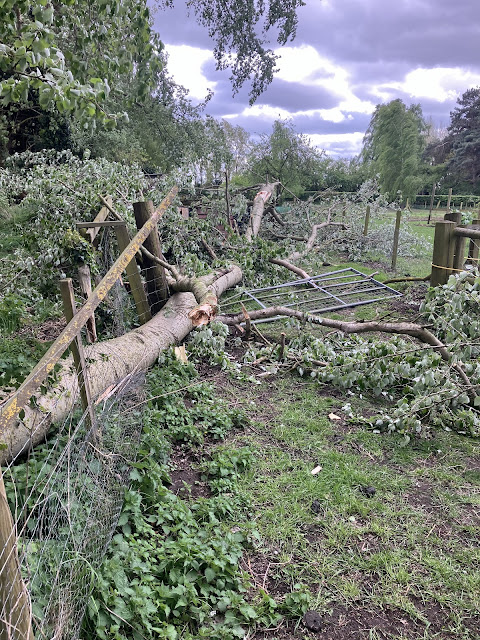I recently planted a new dessert grape in the greenhouse. We had an established one until the year before last. It was the well-known variety, Black Hamburg. This produced a heavy crop each year of smallish, sweet black grapes. Two main stems were trained in parallel along the greenhouse roof which also allowed the hanging fruit to be easily picked (if you were tall enough). However, the grape died early in the Summer rather suddenly. I did not observe any signs of disease or infestation prior to its demise.
Lack of moisture was an initial source of suspicion because the grape was planted in one corner, inside the greenhouse. It is frequently suggested that the best approach is to plant grape vines outside of the greenhouse and to train the vine in so that the roots benefit from natural rainfall and soil moisture. However, this approach is not practical with our greenhouse as it is constructed with large 4' long sheets of toughened safety glass. Greenhouses with standard horticultural glass have much smaller panes which could be omitted or cut into. In addition, there are no louvre windows which could be a convenient route in for the grape stem. If the loss of the grape had been due to a lack of moisture, however, I would have expected the leaves to begin to wilt and leaf edges turn brown. But neither sign appeared, so it remains a bit of a mystery.
The replacement grape is another well-known variety, Crimson Seedless Red. These, too, are sweet and and on the smaller side but have the added attraction of being seedless. In a matter of a few weeks it has already put on more than 4' of growth which I have confined to two main stems. These will be trained in the same way as Black Hamburg had been. It is worth noting, though, that Crimson Seedless Red is a recommended variety for growing outside in the UK.
Training and pruning is important and continual attention to this is well-rewarded . Every side branch which grows from the vine and bears fruit is pruned to make it bear more fruit. Side branches are otherwise cut out; they soon wither and are thrown on to the compost heap. The branches that are retained will bear much fruit and in time we can expect bountiful harvests.
 |
| An impressive looking bunch of Crimson Seedless Red grown in 'Wiki Land' |



